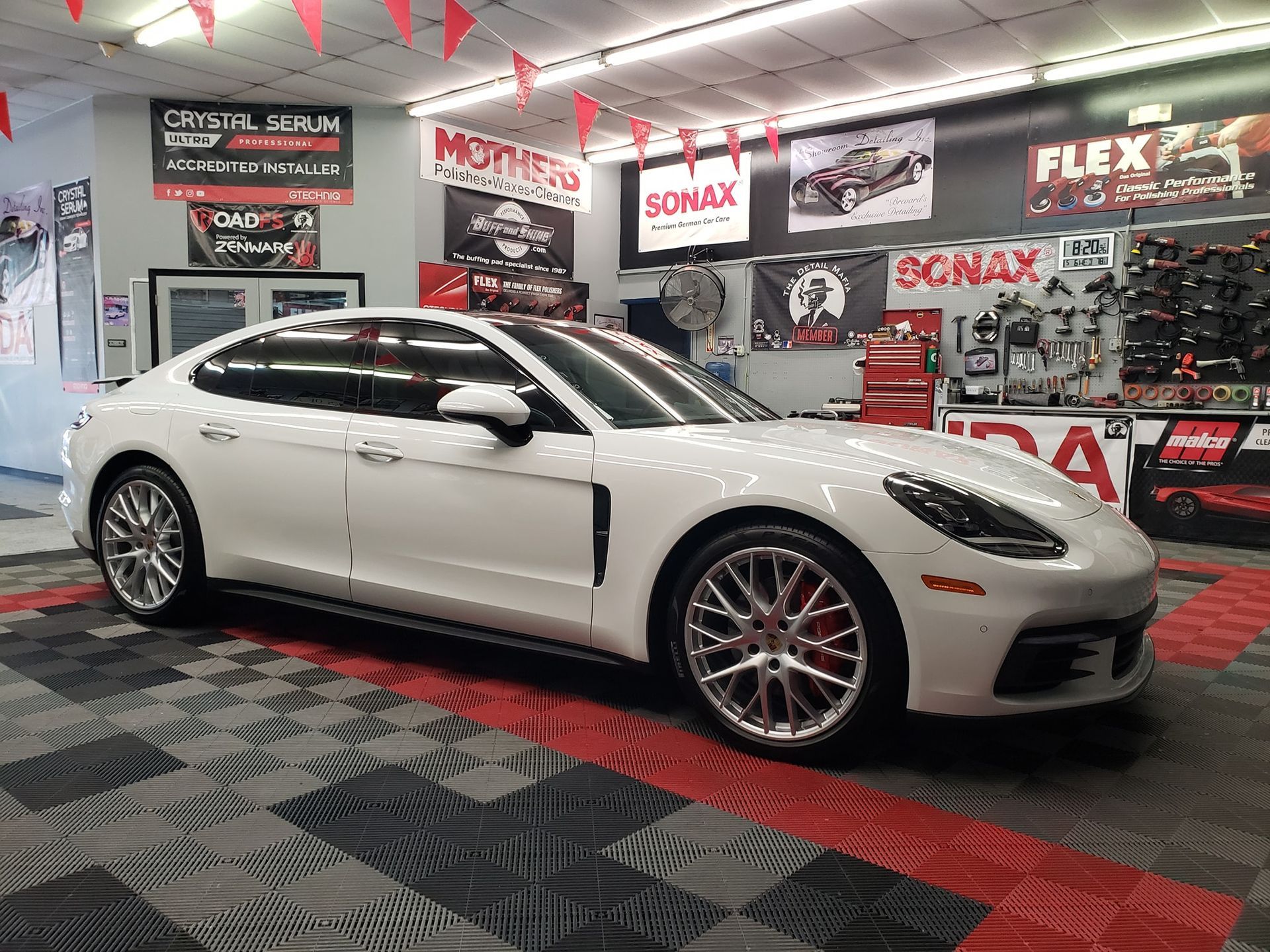JL’s Showroom Auto Salon Blogs

CALL (321) 723-6976
515 S. Wickham Rd, Melbourne FL
Certified Training Facility

They flex and bend but they do not allow defects, or stains to affect your vehicle’s original paintwork! Here at JL’s Showroom Auto Salon, our SunTek Paint Protection Film products are highly sought, self-healing packages that make up a durable yet highly pristine system of surface security for your pride and joy, resisting scratches, scrapes, and swirls.
As a trained ceramic coating installation team located in Melbourne, Florida, we at JL’s Showroom Auto Salon take full responsibility for improving the paint gloss of your ride while keeping its surfaces highly hydrophobic. Preserve the life of what you drive in an immovable way with one of our great ceramic coating packages installed by certified industry professionals!
Looking for a one-stop shop for restoring your ride to its former glory? As Brevard County, Florida’s leading IDA-certified interior and exterior auto detailing shop, we at JL’s Showroom Auto Salon offer exceptional customized car care for affordable prices. Whether it is debris and dirt removal, odor remediation, paint decontamination, or surface stain rectification, JL’s Showroom Auto Salon is here to handle it all!
Style enhancements are one part of our Llumar Window Tint Film packages here at JL’s Showroom Auto Salon. However, the remarkable protection and enhancing characteristics they provide your vehicle’s interior speak volumes for their positive impact on any given automobile’s value. Get the best window tinting for what you drive here at our Melbourne area detailing studio!
If We Protect Your Vehicle, Raise Your Hand.
If Not... Raise Your Standards!™
JL’s Showroom Auto Salon began in 2008 as JL’s Showroom Detailing Inc., evolving over the years and quickly becoming Melbourne, FL’s most recognized auto detailing shop. We proudly exemplify the detailing industry’s highest credentials and achievements, ranging from certifications in various ceramic coatings, window tinting, and paint protection film products to being a reliable source for education and training in best detailing practices. Offering additional warranties and a full detailing supply storefront, we know that quality detailing craftsmanship and exceptional customer care is something that will always set JL’s Showroom Auto Salon apart from the rest!
Phone: (321) 723-6976
Monday - Friday: 8:00 AM - 5:00 PM
Saturday: 8:00 AM - 12:00 PM
Sunday: Closed
ADDITIONAL LOCATIONS SERVED